Lech River (Costa, 2014)
Along the river there is a linear park and an impressive monastery. We listened to the bells of the church and entered, unpretentious, to attend Mass and admire that grand church in the Rococo style.
 |
| Saint Mang Monastery Church (Costa, 2014) |
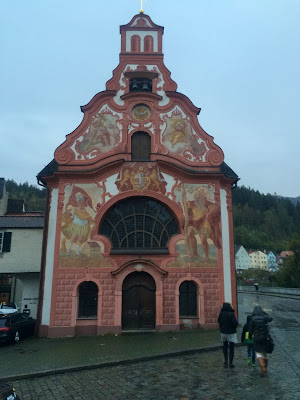 |
| Attached Church to the Holy Spirit Hospital (Costa, 2014) |
And just a few meters away, another beautiful church in the Rococo style, attached to the Holy Spirit Hospital. We left behind a city that surprised all expectations. We boarded the Czech Republic the next day. Too bad our days in Füssen have been too rainy. We must go back in the summer.
On the way to Prague, the train stopped in Munich. There we ate the traditional sausage from the city, still inside the station. We took a stopover in Nuremberb.
 |
| Women's Tower (Costa, 2014) |
The stop was swift, but it gave time to photograph the Women's Tower, a part of the complex and medieval defensive wall system that surrounds the old town of Nuremberg. Then we took a bus that would finally take us to Prague.
Prague - Czech Republic
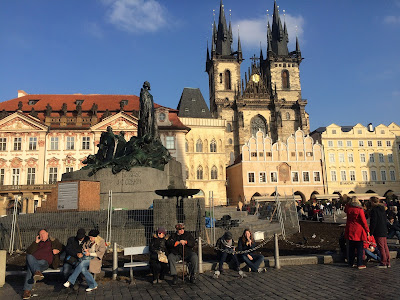 |
| Main Square in the Old Town of Prague (Costa, 2014) |
We arrived in our second country of the trip, the Czech Republic, where we would visit only its capital, Prague. We find the first large city of our route, with Gothic architecture in most of its historic center and numerous bridges over the Vltava River (a tributary of the Elbe, which bathes Hamburg in Germany). From the hostel we went to the first attraction, but that was not Gothic. The Dancing House, an office building in downtown, was designed by Frank Gehry in 1994 and has all the characteristics of its sculptural architecture.
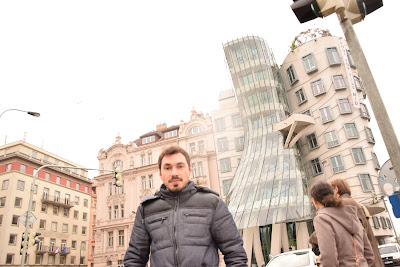 |
Dancing House (Costa, 2014)
|
The main tourist point of Prague is the Charles Bridge, built between the 14th and 15th centuries, at the request of the Roman-German king Charles IV. The views of the Old Town and the Vltava River are wonderful. The bridge is filled with sacred images and its entrance is marked by a great Gothic tower.
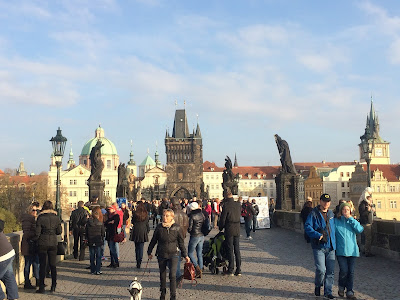 |
| View of Charles Bridge to the Old Town (Costa, 2014) |
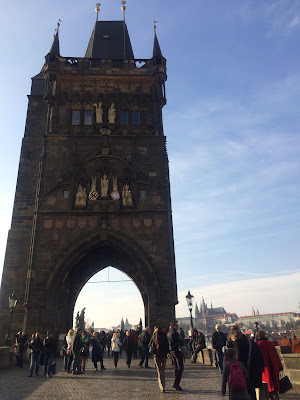 |
Charles Bridge Entrance (Costa, 2014)
|
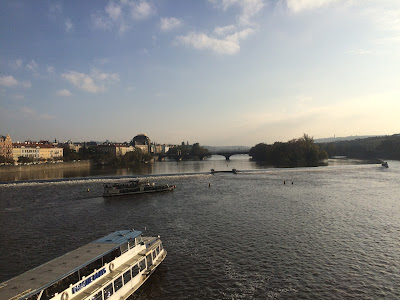 |
| View of the Charles Bridge over the Vltava River (Costa, 2014) |
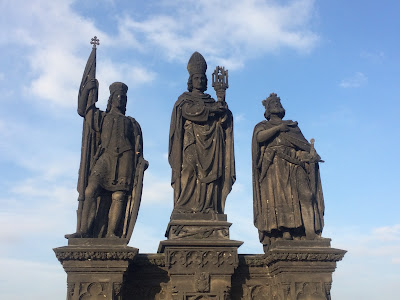 |
Charles Bridge (Costa, 2014)
|
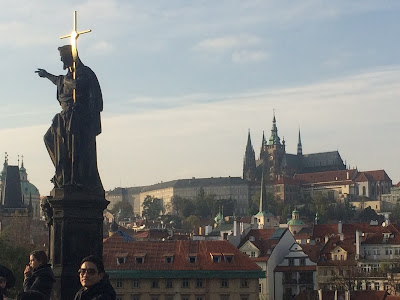 |
Charles Bridge (Costa, 2014)
Another interesting tourist attraction is the ascent to Prague Castle, an architectural complex on the left bank of the Vltava River. It brings together various buildings and styles from the 9th to the 19th century. In its interior is the Cathedral of St. Vitus, the Royal Palace of Prague Castle, the Dalibor Tower, the Convent of St. George and the Golden Lane.
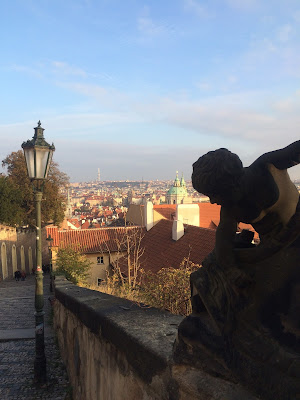 |
View from the castle to Prague (Costa, 2014)
|
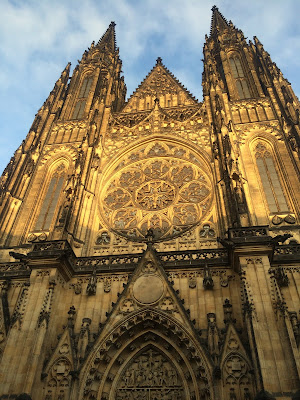 |
| Saint Vitus Cathedral (Costa, 2014) |
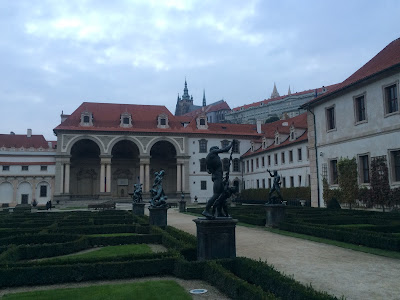 |
| Wallenstein Palace, just below the Royal Palace of Prague Castle (Costa, 2014)
At dusk, we climbed to Strahov's Baroque Monastery to take another view of the city. On the way we ate a local sweetbread called Trdelník, freshly baked and topped with sugar and cinnamon. In the descent of the monastery, we had dinner in a small restaurant that served international dishes.
|
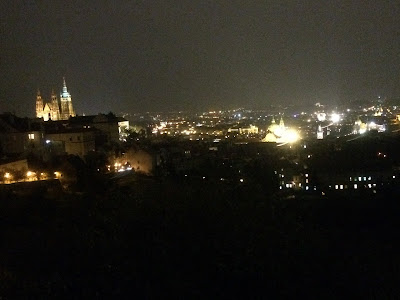 |
Night view of the Strahov's Monastery over the city of Prague (Costa, 2014)
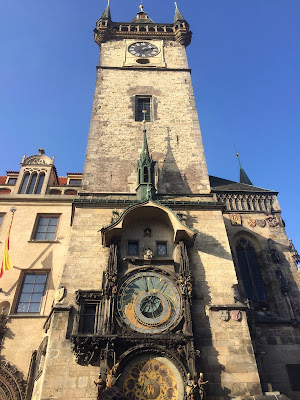 |
Prague Astronomical Clock (Costa, 2014)
|
We can not forget, in Prague's Old Town Square, the famous Astronomical Clock, one of the oldest and most detailed in the world. Built in 1410, daily the clock offers a spectacle to the visitors, because at 8:00 a.m. and p.m., the apostles leave the house and move around the work.
Vienna - Austria
|
|
 |
Saint Charles Borromeo Church, The Karskirche (Thomas Wolf, 2014)
Again we had train tickets purchased, now for the Prague-Vienna section. Arriving in the Austrian capital, we come across a totally different city. Many squares and parks, lots of neoclassical architecture, extremely friendly and helpful people, very efficient transportation system and enviable organization. Vienna also has many Rococo palaces and Baroque churches. Among them, the first stop is obviously the Karskirche, built in 1713 in honor of the Italian counter-reformer St. Charles Borromeo.
|
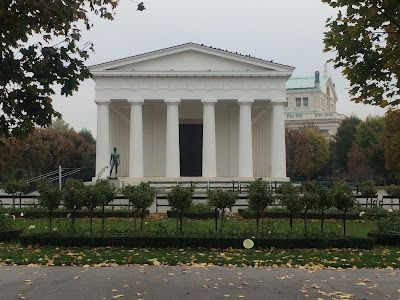 |
People's Garden (Costa, 2014)
The People's Garden, Volksgarten, is one of the most beautiful parks in central Vienna. Around it are the Austrian Parliament, the National Theater, the Museum of Natural History and the Imperial Hofburg Museum, a huge complex of buildings from the 13th to the 20th centuries.
|
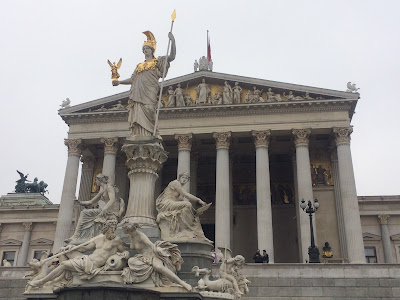 |
| Headquarters of the Austrian Parliament (Costa, 2014)
We continue to the oldest part of the city, where there are boardwalks, several shops and restaurants. At ground zero is St. Stephen's Cathedral, the symbol of Vienna. Built in the 12th century, it acquired the Gothic style when it was renovated two centuries later. Its tower was built in the 16th century, so it has Baroque appearance.
|
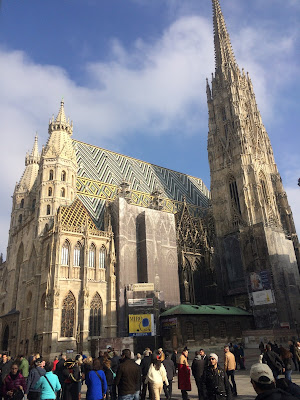 |
Saint Stephen's Cathedral (Costa, 2014)
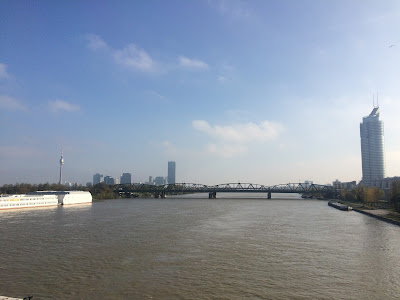 |
| Danube River (Costa, 2014) |
We return to the River Danube, which also bathes the city of Vienna. Also we could not miss visiting two great palaces and their kilometric gardens. The first is the Belvedere Palace, to the east of the city. Built in 1716, in the Baroque style, the palace is divided into two parts, the upper and the lower, according to the position in the topography of the land.
|
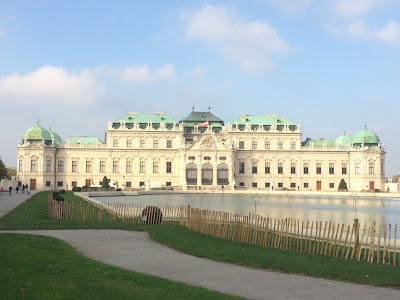 |
Upper Belvedere Palace (Costa, 2014)
|
The second is the Schonbrunn Palace, west of the city, also known as the "Versailles of Vienna" because of its immense dimensions. It was erected to serve as residence to the Empress Leonor Gonzaga in 1643, but it had serious damages later, being reconstituted in 1743, also in the Baroque style. This palace was the residence of the Austrian Imperial Family until the Second World War, where Princess Leopoldine lived there until her marriage to Dom Pedro I of Brazil. Its gardens are immenses, full of wooden gates, fountains and even a greenhouse for the botanical garden.
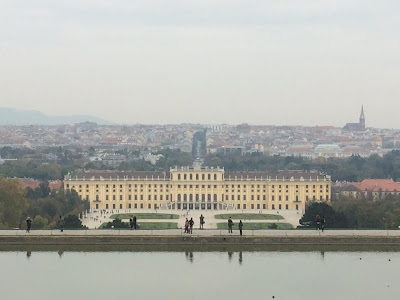 |
| Schonbrünn Palace (Costa, 2014) |
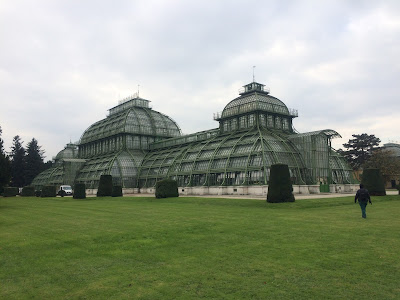 |
| Greenhouse of the botanical garden in Schonbrünn (Costa, 2014)
Returning to the center of Vienna, it is also necessary to eat a chocolate cake and have a coffee in the confectionery shop that was attended by the illustrious Sigmund Freud, the Landtmann.
|
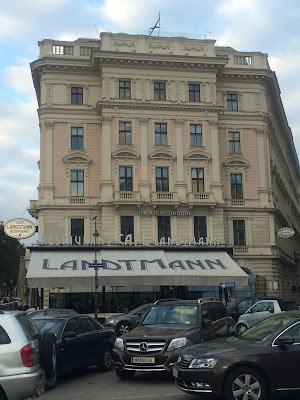 |
Landtmann Confectionery (Costa, 2014)
Before we left Vienna, we visited the Hundertwasserhaus. This is a social-scope housing complex, built in 1977 by Friedensreich Hundertwasser and Joseph Krawina. This is architect and that is artist of pictorial art and who signs the work of multifaceted façade.
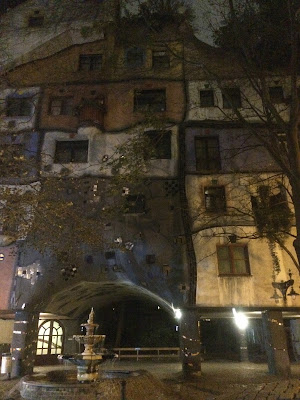 |
Hundertwasserhaus (Costa, 2014)
Bratislava - Slovakia |
|
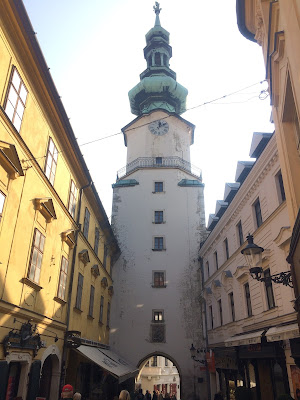 |
| Tower of the Saint Michael's Gate (Costa, 2014) |
Bratislava is a small town, but very organized, colorful and makes you want to take it home. Less than an hour by train from Vienna, the capital of Slovakia welcomed us with the beautiful medieval gate of St. Michael, adorned with a bulbous (onion-shaped) dome, added in the Baroque period. This type of dome was present in the Moslem and Byzantine architectures, and was extended to Eastern Europe, Germany and Austria during the Baroque, until arriving at Ibero-America, even in Baroque Brazilian, Bolivian, Colombien and Mexican churches.
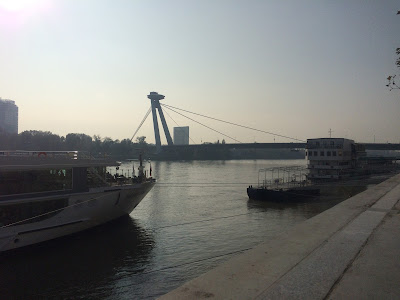 |
| Most SNP Bridge (Costa, 2014) |
Once again we meet our great friend Danube, a travel companion from Germany. The city bus station (Bratislava Einsteinova) is on the other side of the river, crossing the Most SNP Bridge. There you can board cheap buses, around 10 euros, to Poland and Hungary (Budapest). However the tickets are only sold in advance by the internet, mainly by the company Polskibus (for Poland), Student Agency and Orangeways (for Hungary). Nothing was sold at the bus station and the staff did not speak English.
 |
| Main Square of Bratislava (Costa, 2014) |
The town center has several shops, handicrafts and restaurants, quite pleasant when walking. The food is very cheap, even possible to make an entire meal (starter and main course) for only 4 euros. Bratislava is also well-known for the statues scattered around the streets, whose authorship is of several Slovak artists. Another attraction is Bratislava Castle, which began to be built in the 10th century, on the top of the hill, and today is the residence of the President of the Republic. We did not go there because of lack of time, but it is interesting to visit those who spend the night in the city.
 |
| Cumil Statue (Costa, 2014) |
Krakow - Poland
This was the last country of our trip: Poland. If you are willing and interested, it is worthwhile to extend the trip, from Bratislava to Budapest, and then to other Eastern capitals, such as Ljubljana (Slovenia), Zagreb (Croatia), Sarajevo (Bosnia and Herzegovina), Podgorica (Montenegro), Tirana (Albania), Scopia (Macedonia), Sofia (Bulgaria), Bucharest (Romania) and Belgrade (Serbia). They are very favorable exchange countries for travelers with Euros or Dollars, so travel costs will be much lower than in Western European countries.
We opted for Poland because we did not have much time and we needed to go back to Paris. From there we started by train, crossing Slovakia and arriving in the Polish South until we reached Krakow, the city of castles and red bricks.
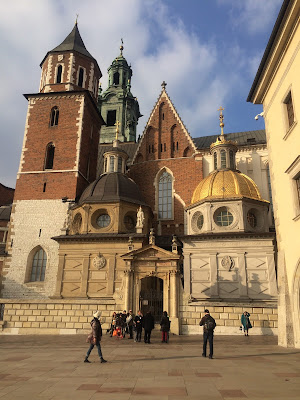 |
| Church of the Royal Castle of Wawel and Krakow Cathedral (Costa, 2014) |
The Royal Castle of Wawel is a large complex that has been built since 1265. The church which is also high on the same hill is the Cathedral of Krakow, built predominantly in Gothic style from the 14th century. In addition, the whole complex offers a great view of the Vistula River and the whole city. Another great attraction is the Stare Miasto, the Old Town, where is a exemple of Gothic of Bricks, the Saint Mary's Cathedral.
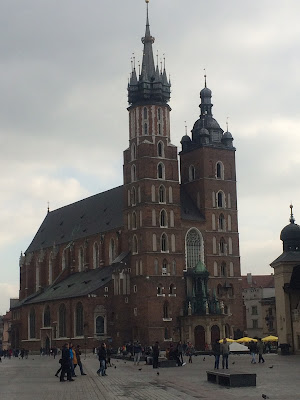 |
Saint Mary's Catedral (Costa, 2014)
|
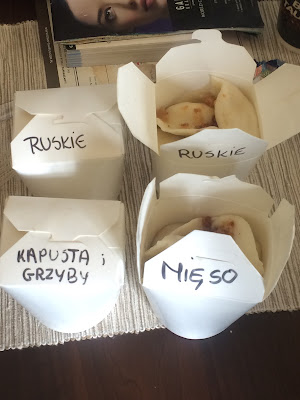 |
| Pierogis (Costa, 2014) |
The typical dish of Poland are the tasty Pierogis. Dumplings boiled and with different fillings, which can be of meat, bacon, potato, spinach etc. They are cheap and worth a meal.
As we arrived on November 2th, we went to the city cemeteries to admire the lights of the Polish candles placed in the tombs. Rigorous winter prevents the flowers from remaining alive in the open, so this tradition of candles, which are covered by a glass dome, adorns the night of Hallowmas in Poland.
 |
| Cemetery in Krakow (Costa, 2014) |
Auschwitz (Oświęcim) - Poland
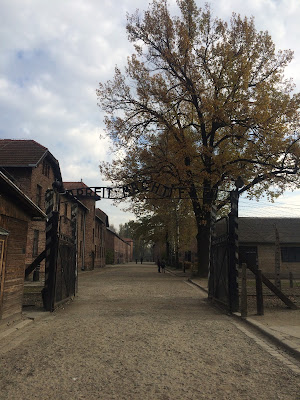 |
| Entrance to the Auschwitz Concentration Camp (Costa, 2014)
Leaving Krakow's main train station (Dworzec Glowny), we headed towards Oświęcim, the small city that houses what is left of the most emblematic concentration camp in Europe: Auschwitz (Oświęcim, in Polish). At the entrance, the portal with the ironic inscription Arbeit macht frei ("work frees", in German). This complex began to be built in 1940, by order of Hitler, and served like experiment. Later, the network expanded and took industrial proportions. It was built in the nearby town of Brzezinka, Auschwitz II or Birkenau (German translation of Brzezinka).
|
 |
| Entrance of Auschwitz II or Birkenau (Costa, 2014)
Warsaw - Poland
|
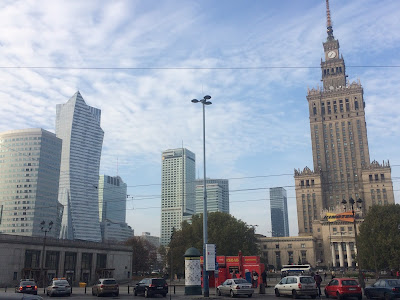 |
View of Warsaw downtown (Costa, 2014)
From central Krakow station trains leave frequently for Warsaw and the journey takes 3 hours. The building that draws the most attention in the Polish capital is the Palace of Culture and Science, this large 237 meters high. The work, begun in 1952, was a Soviet imposition, since Stalin dominated Eastern Europe at that time of the second post-war period. So much hated by the Polish people that they made him surround many other contemporary buildings.
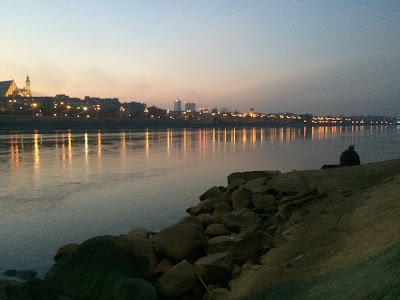 |
View of the Vistula River, Warsaw (Costa, 2014)
Like Krakow, the city of Warsaw is also bathed by the Vistula River. In the Old Town, even after total destruction during the Second World War, we can see many restored buildings just as the Polish people wanted: just as it was before the bombings. The greatest example of this is the Royal Castle of Warsaw. The city also has beautiful parks around the center, such as Lazienki, where the Botanical Garden, the Chopin Monument and the Belvedere Palace are located.
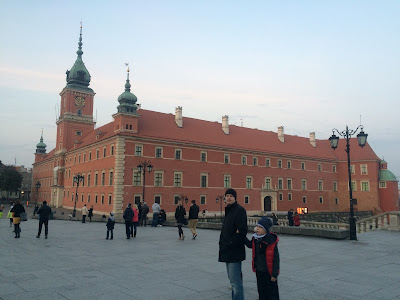 |
Real Castle of Warsaw (Costa, 2014)
And here the trip to East-Central Europe ended. We got back to Paris by plane. We hope you enjoyed this tour and that our trip can contribute to others that you can do, because this is the purpose of this blog. See you later!
|
|
|
|
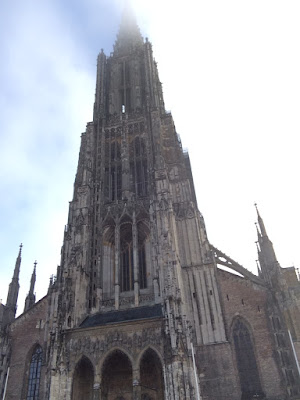
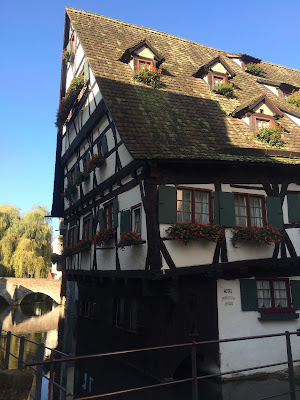

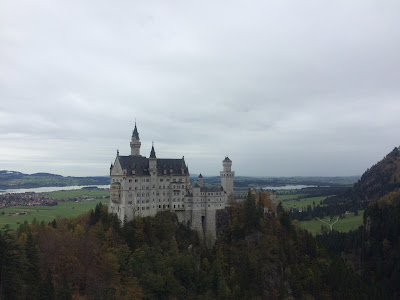

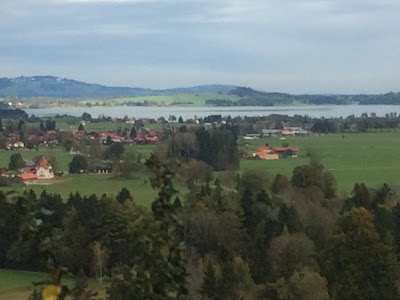
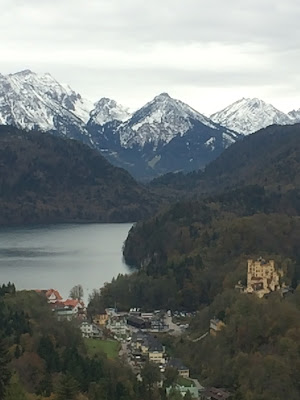
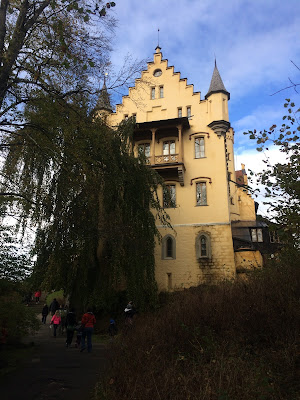
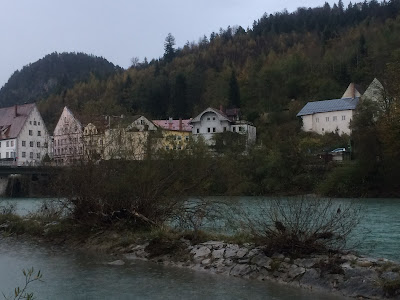






































No comments:
Post a Comment